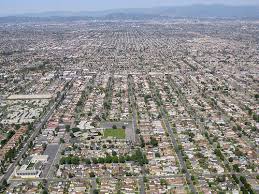 By Ray Rivers
By Ray Rivers
August 23, 2014
BURLINGTON, ON.
Quebec’s Charbonneau Commission uncovered gross corruption between Montreal politicians and the construction industry. That’s Quebec, some would say. Sometimes corruption is in your face, like inexplicable fat infrastructure contracts and some direct payoffs. And sometimes it’s more subtle, as in contributions made to a candidate’s political campaign in the expectation of favourable decisions.
I never took donations from developers when I ran for municipal office because of concern that the donors would want something in return. And of course they would. Our municipal councils approve development plans and make decisions on development charges for the infrastructure required by the development. This sure sounds like an investment by another name.

Few politicians actually get arrested. Burlington has never had a politician convicted of taking a bribe or influence peddling – but in the three years we have observed this Council there have certainly been questionable decisions.
The Municipal Elections Act allows corporate political contributions. And no corporations have deeper pockets when it comes to municipal campaigns than those in the development industry. After all they have a vested interest in getting favourable decisions out of municipal councils. And Councillors who pocket these contributions and then vote on development decisions have put themselves in a potential conflict, by anyone’s definition – notwithstanding the Elections Act.
Last week the Ontario government announced a one-hundred million dollar annual infrastructure program for small communities. Since smaller communities vary in their ability to pay for the repair and rebuilding of bridges, roads and sewers, provincial funding can be a great equalizer. Some of that money will be used for maintenance projects, and some will, no doubt, be directed to the infrastructure needs of new development – costs which have not been adequately covered by municipal development charges, for one reason or another.
Planning for new development is a municipal responsibility under Ontario’s outdated land planning regulations and policies, once considered the best system anywhere. Official land use plans and teams of planning officers have given the illusion that Ontario’s land use planning is better than that of other jurisdictions. Yet, in the end, the province’s development experience is not much better, if at all, than communities with less fancy planning systems.
Despite attempts to put a fresh face on planning with new labels like ‘Places to Grow’, development in Ontario’s smaller communities is classic urban sprawl. Even the creation of the Greenbelt, which promises to safeguard an area greater that the entirety of PEI, has failed to halt the on-going process of sprawling in the short run.
Auto-centric and land-intensive, urban sprawl discourages public transit, segregates workplaces and shops from living places. It is the most inefficient and environmentally destructive form of development. Eventually we will have to dig up most of these subdivisions and replace the kilometres of infrastructure, as we move to better ways of housing people.

Burlington isn’t quite this bad – but what we have isn’t sustainable.
The Town of Milton’s is a classic example. Its population grew by 56.5% from 2006 to 2011, at the same time that population growth in Canada averaged less than 6%. Landlocked Milton achieved its unprecedented growth, all urban sprawl, thanks to a single piece of infrastructure – the Big Pipe. Halton Region and Milton spent $30 million dollars over the last decade on a system to bring water from Lake Ontario to the town and send its wastes back down again.
A former Halton Regional Chair who was a big supporter of the Big Pipe that got water into Milton ans spurred the massive suburban growth was later hired by one of the Milton developers. The Mayor of Milton is still in office and running again – some think to be the politician who out lasted Mississauga’s Hazel McCallion.
At some point the old-town Milton residents and the newer ones as well will realize what has happened to them. Milton is still in its growth spurt phase; gridlock is commonly a sixteen-hour phenomena on the 401, the only Toronto-bound highway passing through the town. The hospital cannot meet the demand.
Residents who thought they were getting a deal buying cheap houses in the ‘burbs’ are now finding the savings illusory. Between the additional transportation costs and those associated with the time they have to spend commuting (e.g. for day care), they would have been better off to have bought in the city. After all, Toronto was recently judged the fourth most livable city in the world. It might have overtaken Vancouver had its infrastructure been better, which more transit riders would have helped fund.
Developers typically donate to as many local political candidates as they judge will be friendly to them. But some municipal Councillors will vote only in the best interests of their constituents regardless of pressure from past and potential campaign donors. Some Councillors may not truly understand the issues involved or may be outright disciples of urban sprawl, so will have no trouble being guided. And then there are those who will outright do the bidding of their benefactors.
This is another municipal election year and the City of Toronto has banned corporate and trade union campaign contributions to municipal campaigns. Voters in other places might wish to ask their candidates about where they obtained their campaign contributions; did they accept donations from the development industry; and if so, do they plan on abstaining from votes on development issues. Corruption is a slippery slope – a little here can lead to a lot more there. Just because it isn’t outlawed doesn’t make it right.
Editor’s note: Rivers argues that “eventually we will have to dig up most of these subdivisions and replace the kilometres of infrastructure, as we move to better ways of housing people.” What if he is right? How do we plan for that? What kind of social dislocation would we be looking at? How would this type of massive social change be paid for? Are the people we will elect to the Region and municipal offices think about this or will they continue to do the same thing all over again?
Background links:
Charbonneau Commission Political Corruption
Planning Act Election Rules Urban Densities Greenbelt Urban Sprawl
Provincial Infrastructure Program Big Pipe More on that Big Pipe
 Ray Rivers writes weekly on both federal and provincial politics, applying his more than 25 years as a federal bureaucrat to his thinking. Rivers was a candidate for provincial office in Burlington where he ran against Cam Jackson in 1995, the year Mike Harris and the Common Sense Revolution swept the province.
Ray Rivers writes weekly on both federal and provincial politics, applying his more than 25 years as a federal bureaucrat to his thinking. Rivers was a candidate for provincial office in Burlington where he ran against Cam Jackson in 1995, the year Mike Harris and the Common Sense Revolution swept the province.


















Urban sprawl, as apposed to what? High density, severe overcrowding, in cities where a 600 square foot home will be the norm, at outrageous prizes. Give me the good old suburbs any old day. But, on the other hand, my 60’X140′ lot and single home will be worth gold in the red belt, where open land opportunities are evaporating quickly.
Has there ever been an urban planner with a responsible code of ethics? There probably has been but they have never been hired or were only employed briefly and then fired for not acting in stride with the rest of their comrades as urban sprawl facilitators. Another trick of ultimately pathetically overmatched city councils, like Toronto has, is to make taxes so low that prudence over development is always bypassed in fear of litigation by developers. The hope for a “people city” waterfront there gradually decayed into condo cancer.